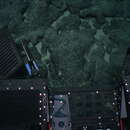pms
nòm ant ël fil


“30. Narella Gray, 1870
FIGURE 14A–G
Narella Gray, 1870:49.—Bayer, 1956:F222; 1961:295 [illustrated key to genus]; 1981b:937 [key to genus].—Bayer and Stefani, 1989:455 [key to genus].—Cairns and Bayer, 2003:618–619.—Cairns and Baco, 2007:392– 393.—Williams, 1992:272.—Cairns and Bayer, 2007[2008]:84–86.
Not Stachyodes Bargatzky, 1881 [a stromatoporoid].
Stachyodes Wright and Studer in Studer, 1887:49 [junior homonym].— Wright and Studer, 1889:54.—Versluys, 1906:86–88.—Kinoshita, 1908a: 45–47.—Kükenthal, 1912:325–328 [in part: not group 4]; 1915:143, 152 [key to genus and species]; 1919:452–456 [key to genus and species]; 1924:308–309 [key to genus and species].
Calypterinus Wright and Studer in Studer, 1887:49–50.—Wright and Studer, 1889:53.
Diagnosis. Colonies dichotomously branched in one or more planes, pinnate, or unbranched. Calyces usually arranged in whorls of up to 14, occasionally reduced to only two (i.e., paired), the appressed calyces always facing downward. Well-developed operculum present (Figure 14a), the operculars prominently keeled on inner surface. Polyps protected by three (Figure 14c) or, rarely, four pairs of large abaxial body wall scales (one pair of basals, one or two pairs of medials, and one pair of buccals), one to three pairs of much smaller (vestigial) adaxial buccal (marginal) scales (Figure 14a), and sometimes additional smaller scales scattered on the adaxial surface; adaxial side only partially covered with scales. Large abaxial scales often meet on adaxial side of polyp but do not fuse. Coenenchymal scales arranged in one layer; outer surface often elaborately ridged (Figure 14e) or keeled.
Discussion. Narella, consisting of 38 valid species (Table 4), is the most species-rich genus within the Primnoidae, each oceanographic region hosting a set of often sympatric species, e.g., Hawaiian Islands (eight species), western Atlantic (seven species), Gulf of Alaska (five species), and Japan (five species). Cairns and Bayer (2007 [2008]) list all species with their approximate geographic ranges. As seen from the generic synonymy, it is a frequently studied and named taxon, and it is likely that there are many more undescribed species in the genus.
Morphological characters used to discriminate species include branching mode, polyp size, number of polyps per whorl, nature of adaxial buccal scales, shape and ornamentation of the body wall scales (especially the nature of the dorsolateral ridge, if present, of the basal scales), and shape and ornamentation of the coenenchymal scales. Molecular sequences have also been published for some species (e.g., France et al., 1996; Berntson et al., 1999, 2001; France and Hoover, 2001, 2002; Cairns and Baco, 2007).
Distribution. Known from all ocean basins from 55 to 4,594 m (Cairns and Bayer, 2007 [2008]).
Type Species. Narella: Primnoa regularis Duchassaing and Michelotti, 1860, by monotypy. The neotype of P. regularis, designated by Cairns and Bayer (2004a), is deposited at the USNM (49385).
Stachyodes: S. regularis Wright and Studer, 1889 (not P. regularis Duchassaing and Michelotti, 1860), = Stachyodes studeri Versluys, 1906 (nomen novum), by subsequent monotypy (Wright and Studer, 1889:55). The type (in alcohol) is deposited at the BM (1889.5.27.71), and a fragment is at the ZMA (Coel. 3085) (van Soest, 1979).
Calypterinus: C. allmani Wright and Studer, 1889, by subsequent monotypy (Wright and Studer, 1889:53). The type is deposited at the BM (1889.5.27.104).”
(Bayer & Cairns, 2009)